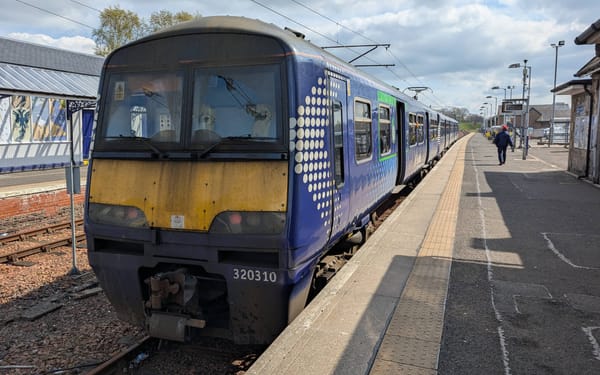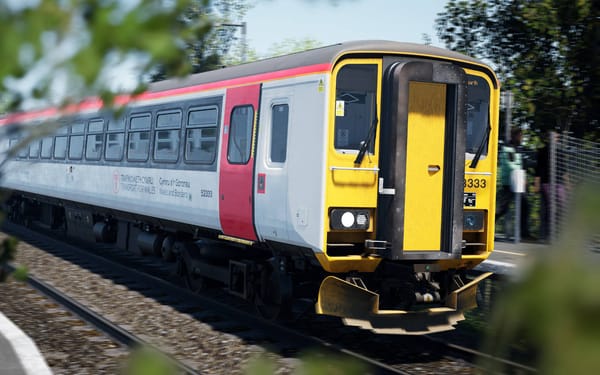The LNER Class 801 Azuma — an Overview

The Class 801 electric multiple units operated by London North Eastern Railway (LNER) are now a common sight along the East Coast Main Line. Since their introduction, I have ridden on-board these trains several times. That includes the lengthy journey between London Kings Cross and Edinburgh Waverley, by the way. Here is everything you need to know about the rolling stock, from their construction to their on-board facilities.
This video is hosted on YouTube. By playing it, you agree that YouTube may set third-party cookies.
Accept & playThese units were introduced as part of the Department for Transport's Intercity Express Programme (IEP). The programme has seen Hitachi's AT300 series of trains succeed the ageing InterCity 125 and InterCity 225 fleets on the East Coast Main Line and Great Western Main Line. Several other operators, such as Avanti West Coast, have purchased variants of AT300 units since.
The Class 801 was to be initially manufactured for both LNER and Great Western Railway (GWR). But this did not quite materialise. GWR announced in 2016 that they would be modifying their order, instead opting for Class 800/3 units for bi-modal (electric and diesel) operation. This was the result of delays in the electrification of the Great Western Main Line; the Class 801 is fitted with a single diesel engine intended only for emergency use.
LNER is operating twelve 5-car 801/1 units and a further thirty 9-car 801/2 units. The first to enter service on 16 September 2019 were doubled-up 801/1s to form 10-car trains. The 9-car units found their way into revenue earning service on 18 November, later that year. Alongside the Class 801s, LNER also operate 23 Class 800 bi-modal multiple units (BMUs).

Let's take a look on board, starting with standard class. Here, there is a 2+2 seating configuration, typical for standard class inter-city services in the UK. This configuration is composed of a variety of single and table seats, each with foldable armrests. On the backs of the single seats are relatively compact fold-down tables. Plenty of space to store larger items of luggage can be found at either end of the carriage. Meanwhile, other, smaller items can be stowed above your seat with the overhead luggage racks or placed underneath your seat.
Electronic seat reservations operate on Azuma services, indicated by small displays above each pair of seats. Power sockets for charging phones and laptops are provided per pair of seats. And you can have food and drink delivered directly to your seat after scanning a QR code. Finally, there are designated wheelchair spaces and accessible toilets on board, should you need them.

A first class ticket comes with a handful of upgrades. The seats are slightly more padded and there is more space to manoeuvre with a 2+1 seating arrangement. The airline-style seats have larger tables that could comfortably fit a smaller laptop, too. You will also secure access to LNER's first class lounges at certain stations. For shorter journeys, I wouldn't bother upgrading.
As I mentioned earlier, further orders for AT300 units have been placed by various UK train operating companies (TOCs). While not under the Intercity Express Programme, GWR ordered several additional units for their IET fleet since bringing their Class 800s into service. Hull Trains are now operating Class 802 Paragon units, as are TransPennine Express as part of their Nova fleet overhaul. East Midlands Railway and Avanti West Coast announced orders for various AT300 trains in 2019.

And if that wasn't enough for you, the recently unveiled budget TOC Lumo will be operative five 5-car Class 803s for its open access service beginning October 2021. As a subsidiary of FirstGroup, Lumo will be running two trains per day in either direction between London and Edinbugh. It is an interesting strategy and can be likened to a budget airline, but they may be held back by their units' limited capacity. But, if successful, we might see them extending into, for instance, the West Coast Main Line.
Inter-city Express Trains (IETs) technically only refer to GWR's units, but I have come to use this term to refer to all the AT300 units making their way onto UK tracks. That said, the IETs are subject to an immense volume of criticism from rail enthusiasts; the conversation comparing IETs to their predecessors (including the likes of the InterCity 125 and InterCity 225) amasses plenty of debate. But, for me, the IETs do just what they were brought in to do. Most of the time.





